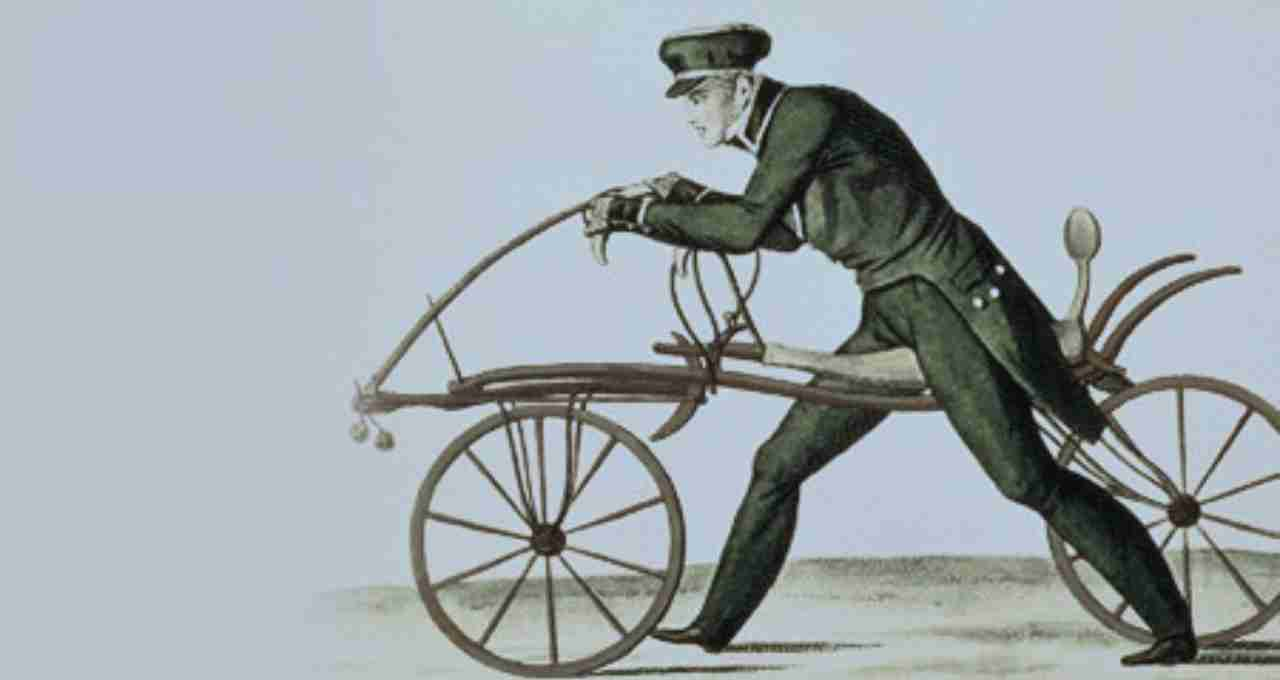Today, the bicycle is not just a mode of transport but has become an excellent means for protecting the environment, promoting health, and exercising. But have you ever wondered how the bicycle was invented? Who made it and when did it begin? Let's delve into the untold story of this fascinating and inspiring European invention, a remarkable result of 19th-century technological thought and human imagination.
Early Thoughts: The Journey Begins with the Wheel
The bicycle's journey began when humans invented the wheel. However, the idea of balancing and riding on two wheels simultaneously was not easy. This was a unique and new concept, which European scientists and engineers realized after many years of experiments and hard work. This very thought later took the form of the bicycle that we know today.
First Step: The Birth of the Draisine

In 1817, Karl von Drais of Germany created a machine he called the 'Laufmaschine,' or 'running machine.' Today, it's known as the 'Draisine.' This machine was based on two wheels, but it did not have pedals. The rider had to push it along the ground with their feet, much like children ride balance bikes today. It was made of wood, and its frame was also heavy.
Drais's aim was to make an alternative to walking that was faster and more convenient, as transport in Europe was in crisis due to the deaths of horses. The Draisine proved to be a successful experiment and became popular in other parts of Europe as well.
The Magic of Pedals: The Foundation of the Modern Bicycle
In 1839, Scottish blacksmith Kirkpatrick Macmillan first introduced the idea of adding pedals to this machine. These pedals were connected to the rear wheel, and the rider no longer had to touch the ground with their feet. Macmillan's invention remained very limited to the public, but it was a revolutionary step in the development of the bicycle.
Towards Commercial Success: The Contribution of the Michaux Brothers

In the 1860s, Pierre Michaux and his son Ernest Michaux of France played a significant role in popularizing the bicycle. They created a metal frame and added pedals to the front wheel, making the bicycle easier to ride and control.
The bicycles made by the Michaux brothers were called 'Velocipedes,' also known as 'Bone-shakers' because the ride was very bumpy. However, their popularity increased so much that companies began producing bicycles for the first time in France.
The Arrival of the Safety Bicycle: The Beginning of a Revolution
In the 1870s, the bicycle industry reached new heights in England. The 'Penny-farthing' bicycle emerged, with a very large front wheel and a smaller rear wheel. Although it looked attractive, it also posed a higher risk of falling.
In 1885, John Kemp Starley of England designed a new bicycle called the 'Safety Bicycle.' This was the form of the modern bicycle – both wheels were the same size, powered by a chain drive, and had a balanced design. This bicycle later became famous as the 'Bicycle.'
The Arrival of Rubber Tires and Gears

In 1888, John Boyd Dunlop of Scotland created a rubber tire that could be inflated with air using a pump. This tire was called a 'Pneumatic Tire'. With its arrival, riding a bicycle became more comfortable and easier than ever before. At the same time, a gear system was also added to bicycles, which required less effort when climbing uphill and made the journey smoother. This change made the bicycle even more popular.
Changes in Women's Lives
In the late 19th century, when the bicycle began to be mass-produced, it was not just a means of transportation but also became a symbol of freedom for women. Especially in Western countries, women adopted bicycles and started going out on their own. This not only gave them the benefit of exercise but also gave them the courage to break the restrictions and traditions in society. Cycling became a symbol of their confidence and independence.
The Entry of the Bicycle in India
The bicycle first came to India during British rule. Initially, it was only seen with wealthy people and British officers, but over time, it also began to reach ordinary people. The bicycle became an essential means for the middle class and people living in villages. During the independence movement, many revolutionaries used bicycles to deliver secret messages and for transportation. Thus, the bicycle played a special role in India's social and historical era.
Today's Bicycle: A Fusion of Technology and the Environment
Today, bicycles are not only an inexpensive and simple means of transport in cities, but they are also helpful in protecting the environment from pollution. Many modern types of bicycles are available in the market, such as mountain bikes, hybrid bicycles, and e-bikes (electric bicycles).
In many European countries like the Netherlands, Denmark, and Germany, the bicycle has become the primary means of transportation. In India too, bicycle tracks and rental systems are now being promoted under 'Smart City' projects.
The invention of the bicycle was not just a technological innovation; it is a symbol of human ingenuity, necessity, and innovation. The imagination that European engineers and inventors gave birth to in the 19th century is today contributing to health, the environment, and freedom worldwide. The bicycle teaches us that the world can be changed with simple thinking and determination – even if it's just on two wheels.















